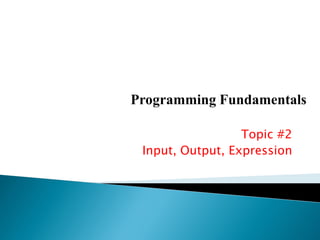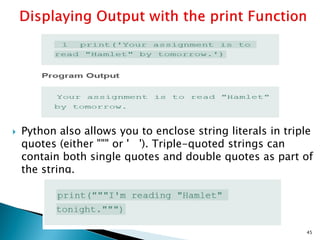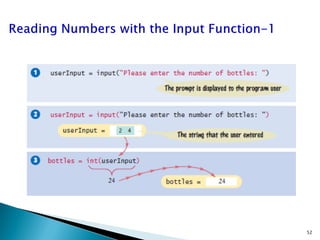This document discusses variables, data types, expressions, and functions in Python. It defines a variable as a name that represents a stored value in memory. It describes different data types in Python including integers, floats, strings, Booleans, and others. It also discusses expressions, which represent computations that evaluate to a value, and different expression types like arithmetic, relational, logical, and compound expressions. Finally, it introduces functions as blocks of code that perform tasks and can return values.








![ There are some words that are reserved by
Python for its own use. You can't name variable
with the same name as a keyword. To get a list of
all the keywords, issue the following command
>>> import keyword
>>> keyword.kwlist
['False', 'None', 'True', 'and', 'as', 'assert', 'break',
'class', 'continue', 'def', 'del', 'elif', 'else', 'except',
'finally', 'for', 'from', 'global', 'if', 'import', 'in', 'is',
'lambda', 'nonlocal', 'not', 'or', 'pass', 'raise', 'return',
'try', 'while', 'with', 'yield']
9](https://image.slidesharecdn.com/topic-2-expressionvariableassignmentstatement-221229063808-ae191f1d/85/TOPIC-2-Expression-Variable-Assignment-Statement-pdf-9-320.jpg)













































